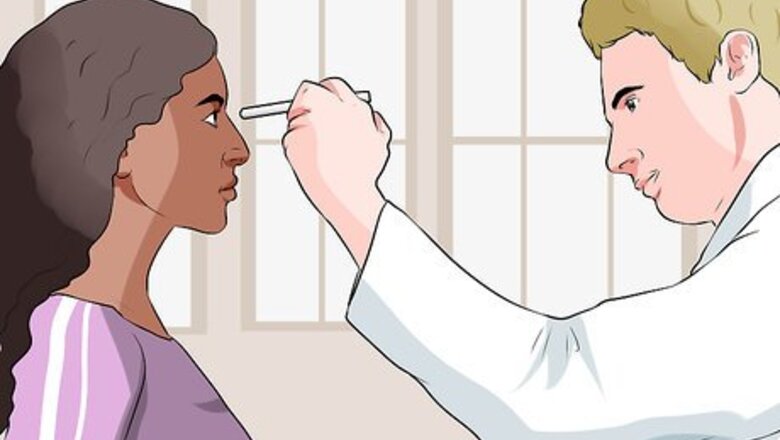
views
X
Research source
Troubleshooting Vision Problems
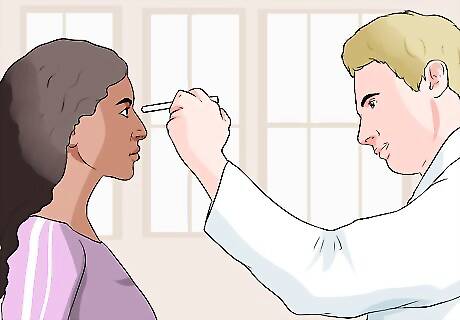
Get an eye exam. If you're squinting even though there is adequate light without being overpowering, chances are there is something wrong with your vision. If it's been more than one or two years since your last eye exam, then it's time to get a new one. Eye exams may not be free depending on where you live so consult your Doctor, family or friends as they may have recommendations. Depending on your insurance, you may be covered for eye care as new glasses can set you back upwards of $500; however, there are also lower cost online distributors who will send low-cost glasses straight to your home after you send them your prescription. Ask your eye care specialist what options are available at your location. If you're usually squinting to see better, you need glasses or an updated prescription, because by squinting, you're actually trying to artificially change your depth of focus.
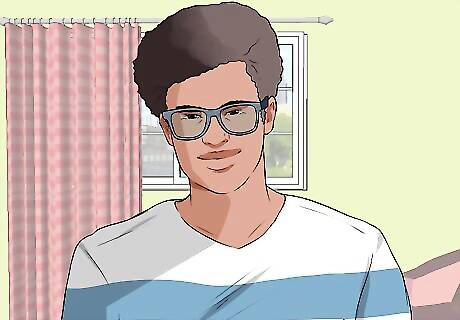
Wear the lenses/glasses that are prescribed to you. Check your ego at the door and always use your glasses or contacts as prescribed to you. It's easy to get lazy or vain and avoid having to wear them. Choose a pair of glasses that suit your style and facial structure and keep them close by so that straining (and squinting) is minimized. Consider a bifocal lens if you find you are constantly wearing and removing glasses for different situations but consult an optometrist before doing so.
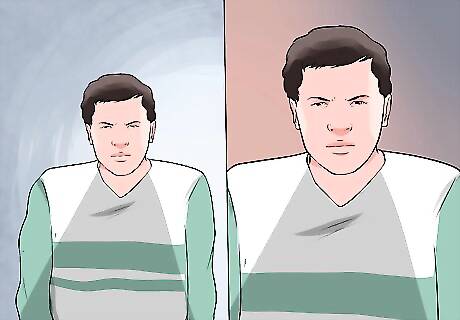
Change locations. If you squint because of difficulty focusing, move closer to or further away from the subject whenever possible. For example, ask to sit in the front of the classroom or boardroom if it will help you focus. You can also reserve your seat or come early to a movie or play if you know what row you need to be at for optimum viewing.
Adjusting to Brightness
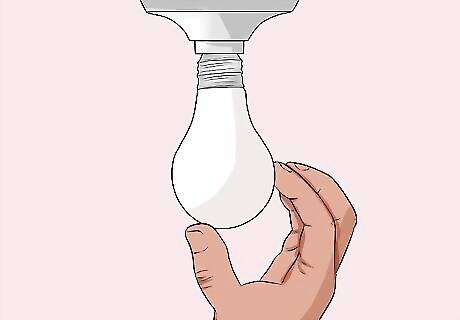
Adjust the light of the room. A lot of the time squinting is caused by the amount of light we are taking in. If you are able, adjust the brightness settings of available light sources. For example, change the type of bulb in your office or home to a lower wattage. If you frequently find yourself squinting in response to bright lights, it usually means you have some mild inflammation on the surface or inside of your eyes. That could be caused by things like mild dry eye, allergies, and certain types of arthritis. It may be difficult to change the lighting in your office so it is best to consult your immediate supervisor or the Human Resources Department before attempting to make any changes yourself. If you are squinting when reading an electronic device, check the settings if it is possible to adjust the brightness settings. For example, televisions and mobile phones can easily be adjusted within the settings menu.
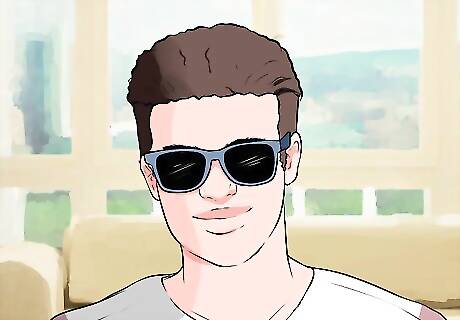
Wear sunglasses. The most common reason for squinting is due to the brightness of the sunshine. If you are squinting outside on a bright sunny day, a pair of quality sunglasses may solve or reduce the problem. Research what brands offer as some brands focus on fashion while others on function. Make sure the glasses block at least 99% of ultraviolet (UV) rays. Budget how much you are willing to spend on sunglasses as some can reach upwards of $500. If you are liable to lose them, think about choosing a pair of sunglasses that fit within your means. If you are more active, choose a pair of sunglasses that won't fly off your face easily. You can also purchase accessories to keep them in place or to turn your everyday glasses into sunglasses by simply clipping onto the frame.
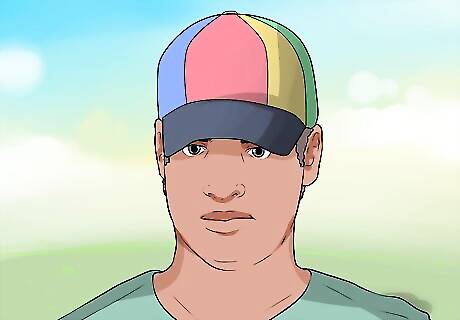
Wear a hat or visor. The brim of a hat or visor provides temporary shade by cutting the amount of light entering into your eyes. Choose a hat or visor that's comfortable and suits your style. A baggy hat may fly off when windy; in contrast, a hat that is too small may cut off circulation and cause you discomfort. Many hats can be adjusted or come in different sizes. Make sure you choose one right for your head shape. Some athletic hats are made of breathable material that wicks sweat away from the body, which may be a wise choice for humid climates or if you are prone to sweating a lot.
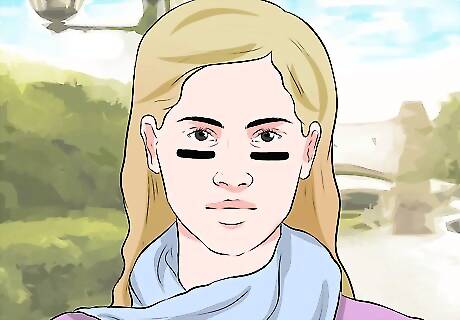
Use eye black. Many individuals who play sports outdoors or under bright stadium lights use eye black to reduce glare. Apply black strips or black grease underneath each eye to help reduce squinting. Be careful when using grease and make sure not to let it stain clothes or furniture as it may be hard to clean. Football players and baseball players famously apply this under their eyes so watch a game or research pictures for the correct way to apply eye black.
Breaking a Bad Habit
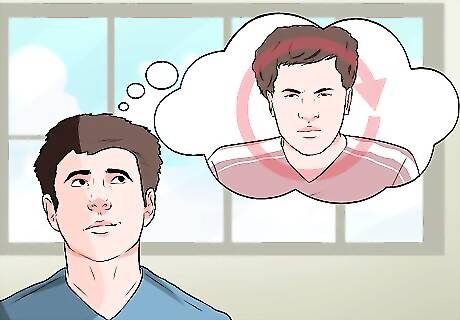
Identify squinting as a habit and not a necessity. Squinting can be a natural reaction to brightness but it can also be a habit that you have formed. Ask yourself whether you're squinting has caused any frustration, anxiety, or self-consciousness. Chances are that your social network has already mentioned something as they will notice it more than you because it may already have become ingrained. Habits are formed automatically from repetition so identifying squinting as a bad habit means that you have to make a conscious effort to prevent it from occuring.
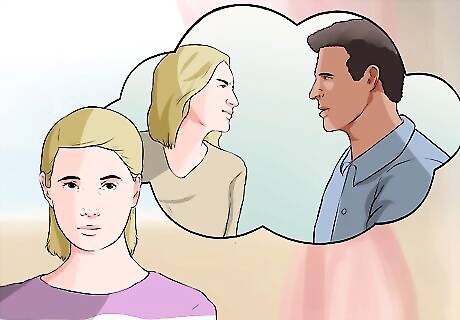
Identify the cue that triggers you to squint. Notice whenever you are squinting and evaluate the setting. Do you squint whenever you're talking to your boss? Do you squint whenever you're meeting someone new? Chances are there is a cue or context that brings about your squinting. Keep a journal to record when you squint. After a few weeks you will clearly be able to see a pattern unless someone has already pointed it out to you.
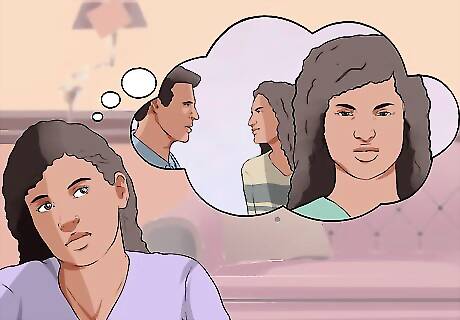
Evaluate why squinting has become a habit in response to your trigger. Whether you developed squinting as a way to cope with stress and anxiety or simply out of childhood boredom, ask yourself why you ultimately feel the need to squint. There is always a strong emotion associated with whatever triggers your bad habit. For example, many people chew their nails because they are anxious so ask yourself what emotions you are feeling when you catch yourself squinting. The emotions may be hidden deep beneath the surface so take the time to evaluate the context. Talk to your social circle to get at the heart of the matter.
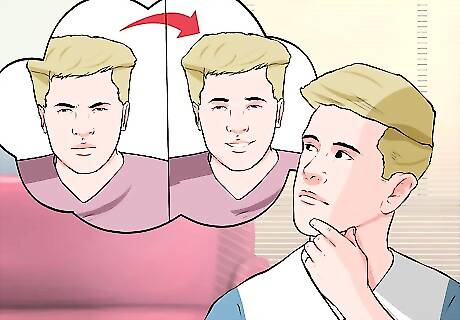
Think of a positive alternative action to replace your bad habit. Habits are difficult to break especially if you have been doing it most of your life. Once you know what triggers your blinking and what ultimately motivates it, make a conscious effort to replace the habit with something more positive. For example, if you squint when you are at parties because you are insecure that no one will speak to you, try smiling instead. This presents self-confident and open body language.
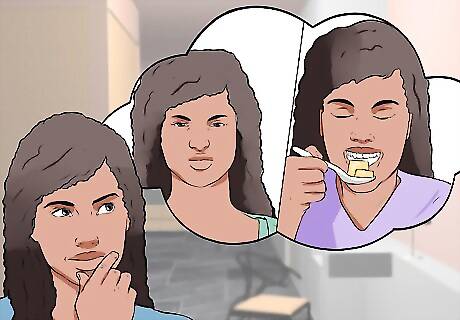
Reward yourself when you don't squint. Even if you only attempt to stop squinting, positive reinforcement will make each successive attempt easier. Whether it's verbal praise or a material reward, remain positive in your pursuits. Rewards rather than penalties will make it easier to break bad habits.
Stopping Your Subjects From Squinting for Photographers

Get them to relax. Be aware of what makes people squint and keep the lights dim until absolutely necessary. Walk your subjects through the lighting process so they have time to adjust by either covering their eyes until ready or keeping them shut until the exact moment you are ready to take their picture. Provide them until the count of three to keep their eyes covered and then take their picture the second they open them so as to avoid the few moments their eyes' natural squinting reaction.
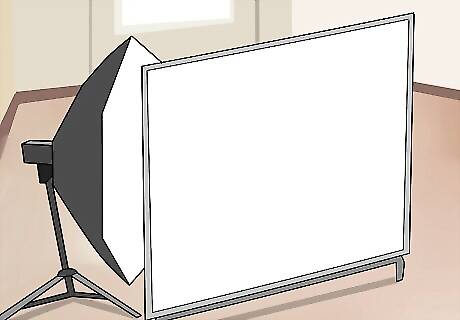
Use different lights and tinker with lighting diffusion. If you are in a studio shoot, tinker with the type of lights in combination with diffusion to help reduce the brightness while still accomplishing the look you are trying to achieve. Make sure to keep lights off until you are ready to test or shoot. Lights can get extremely hot depending on the type and studio. Using stand-ins can help with any fatigue your subjects may endure when sitting in a bright studio.
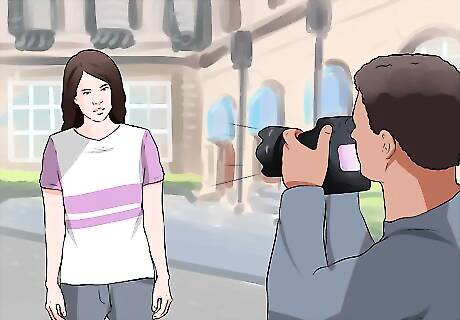
Use flash. Not only does a flash provide additional light but certain photographic flashes can be set to help the eyes of your subject adjust to different lighting conditions by flashing multiple times. Moreover, flash can also be used in sunny days so as to prevent your subject from squinting. When using flash on a sunny day, ask your subject to sit with the sun behind them and use the flash to brighten up their face. If the sunlight requires a shutter speed faster than the sync speed of your flash, use a smaller aperture, fit an ND filter onto the lens, or use a flashgun's high speed function. Timers are an effective tool in coordinating photography equipment with your flash. Some flashguns have a remote trigger function that allows you to fire more than one flashgun simultaneously.














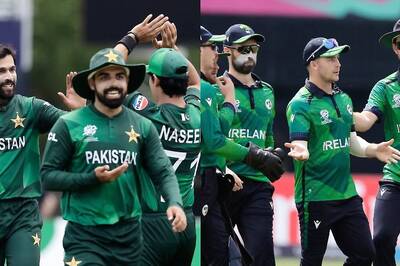

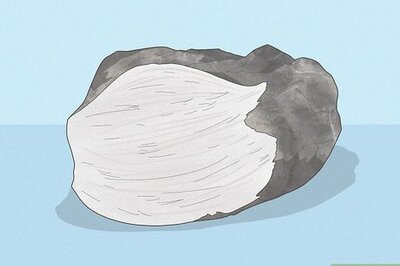


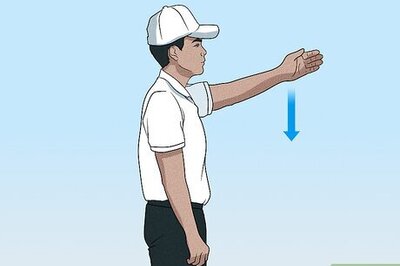
Comments
0 comment